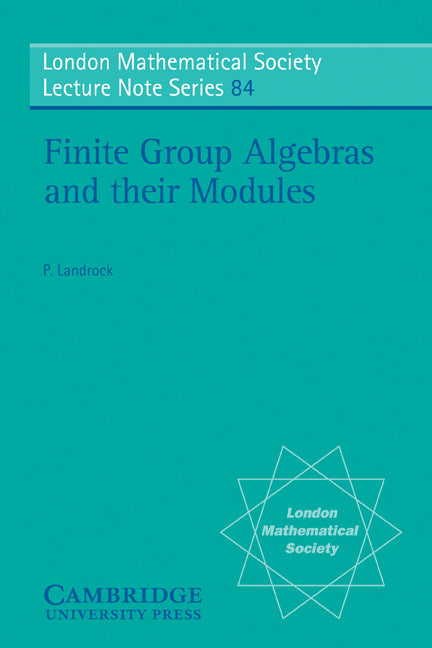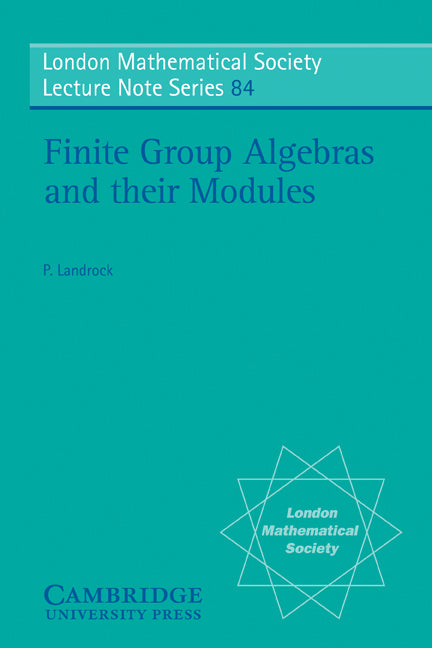Freshly Printed - allow 8 days lead
Couldn't load pickup availability
Finite Group Algebras and their Modules
Originally published in 1983, the principal object of this book is to discuss in detail the structure of finite group rings.
P. Landrock (Author)
9780521274876, Cambridge University Press
Paperback, published 29 December 1983
286 pages
22.9 x 15.2 x 1.6 cm, 0.43 kg
Originally published in 1983, the principal object of this book is to discuss in detail the structure of finite group rings over fields of characteristic, p, P-adic rings and, in some cases, just principal ideal domains, as well as modules of such group rings. The approach does not emphasize any particular point of view, but aims to present a smooth proof in each case to provide the reader with maximum insight. However, the trace map and all its properties have been used extensively. This generalizes a number of classical results at no extra cost and also has the advantage that no assumption on the field is required. Finally, it should be mentioned that much attention is paid to the methods of homological algebra and cohomology of groups as well as connections between characteristic 0 and characteristic p.
Preface
Part I. The Structure of Group Algebras: 1. Idempotents in rings. Liftings
2. Projective and injective modules
3. The radical and artinian rings
4. Cartan invariants and blocks
5. Finite dimensional algebras
6. Duality
7. Symmetry
8. Loewy series and socle series
9. The p. i. m.'s
10. Ext
11. Orders
12. Modular systems and blocks
13. Centers
14. R-forms and liftable modules
15. Decomposition numbers and Brauer characters
16. Basic algebras and small blocks
17. Pure submodules
18. Examples
Part II. Indecomposable Modules and Relative Projectivity: 1. The trace map and the Nakayama relations
2. Relative projectivity
3. Vertices and sources
4. Green Correspondence
5. Relative projective homomorphisms
6. Tensor products
7. The Green ring
8. Endomorphism rings
9. Almost split sequences
10. Inner products on the Green ring
11. Induction from normal subgroups
12. Permutation models
13. Examples
Part III. Block Theory: 1. Blocks, defect groups and the Brauer map
2. Brauer's First Main Theorem
3. Blocks of groups with a normal subgroup
4. The Extended First main Theorem
5. Defect groups and vertices
6. Generalized decomposition numbers
7. Subpairs
8. Characters in blocks
9. Vertices of simple modules
10. Defect groups
Appendices
References
Index.
Subject Areas: Algebra [PBF]


